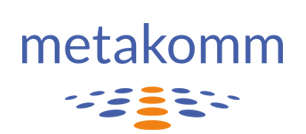Expand creativity with Design Thinking

Expand creativity with Design Thinking
Congratulations on the successful accreditation, Ines Schmitz!
Our colleague Ines Schmitz is now an officially certified Design Thinking coach.
In this short article she sheds light on what makes Design Thinking special, particularly from a psychological perspective.
An article by Ines Schmitz:
You have probably heard the term “Design Thinking” many times. But why is this method currently attracting so much attention?
A large number of start-ups and fast-growing companies are using the implementation of this method to achieve sustainable business success.
What is Design Thinking and what makes it so special? To what extent does the Design Thinking method support agile working and thinking in organizations? And why does our thinking need to be “designed” at all?
Today’s article deals with these questions.
What is Design Thinking?
Design Thinking refers to a structured creativity process in which a collection of agile methods, tools and techniques support teams in solving complex problems and creating innovations.
According to the model of the German pioneer Hasso Plattner, the Design Thinking process consists of 6 phases. All considerations start with the users, customers or seminar participants and their needs:
The whole process is about being able to adapt flexibly to the needs of the customer, based on continuous feedback. With Design Thinking, the right questions are asked and the core of the problem is revealed. Simply put, Design Thinking is a way to discover and solve problems.
Design Thinking and Agility
The Design Thinking process relies on short and regular development cycles, user orientation and early feedback, as well as teamwork and an open error culture. Agility is thus a superordinated attitude in the Design Thinking process, which is represented in its principles and the use of agile methods.
Since Design Thinking as an innovation process stands usually at the beginning of a development cycle, the application of other agile frameworks (SCRUM, Kanban, etc.) during the production and maintenance phase can be an ideal complement.
What is special about Design Thinking?
Creativity techniques are of course not a novelty and a variety of them are already used in business practice. So what is special about this method?
The focus of this technique is on people as a means of finding solutions. This is also the biggest difference to other methods of problem solving. In Design Thinking, the focus lies on the needs and challenges of the target audience. Problem solving results out of a human needs perspective.
This approach hardly exists in other approaches. Here, the focus is rather on reducing possible costs or the claim to use the currently most modern technology including respective tools. Design Thinking, on the other hand, relies heavily on empathy and the development of creative innovations.
What do people, employees, customers and investors need? How can we make our product better? What helps employees to be more creative, open and empathetic?
Furthermore, this method can be applied to various sectors and almost any problem.
Design Thinking and neuropsychological processes
From my work as a psychologist, I know only too well the difficulties with automated and stuck thought processes. However, thinking and acting in automated processes also has many positive aspects, because especially in the often stressful working context, our subconscious cognitive autopilot helps us to save energy and quickly follow the “familiar, tried and tested” path.
This strategy is often useful and helpful, but it hinders creativity and the development of new solutions because it is strongly neuronally automated. When there is a desire for change, it takes a conscious (self-)reflection process to switch the autopilot into a more active cognitive process. This conscious engagement is also reflected in the process of Design Thinking. It offers a structured design, a “designed process”, which promotes conscious self-reflection and thus enables new ways of thinking and acting. With Design Thinking, “thinking outside of the box” is not a stroke of luck or a coincidence, but rather a structured and learnable process that can break through entrenched structures that are no longer desirable and create innovative solutions.
Design Thinking in application
In practice, a Design Thinking team is formed, ideally consisting of 3-6 people from different functions and organizational areas. We put ourselves in the customers’ shoes and, through precise observation and analysis, find out about their needs and the resulting goal of the Design Thinking process.
Then we move into the solution space. We gather ideas that may be unusual and even utopian. It is important here not to restrict the creative process. After developing a prototype, we finally test it and can determine through customer feedback whether an idea really works.
The end result is a new product idea, a new service or the results of the process.
Would you like to go through a Design Thinking process with your team? We would be happy to support you.
Feel free to contact us here.




